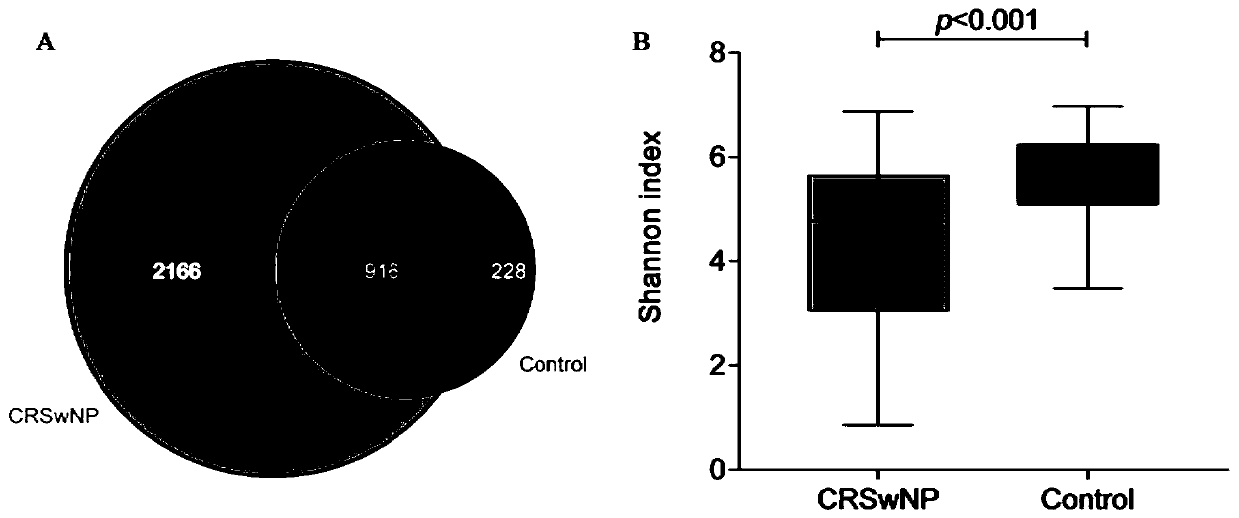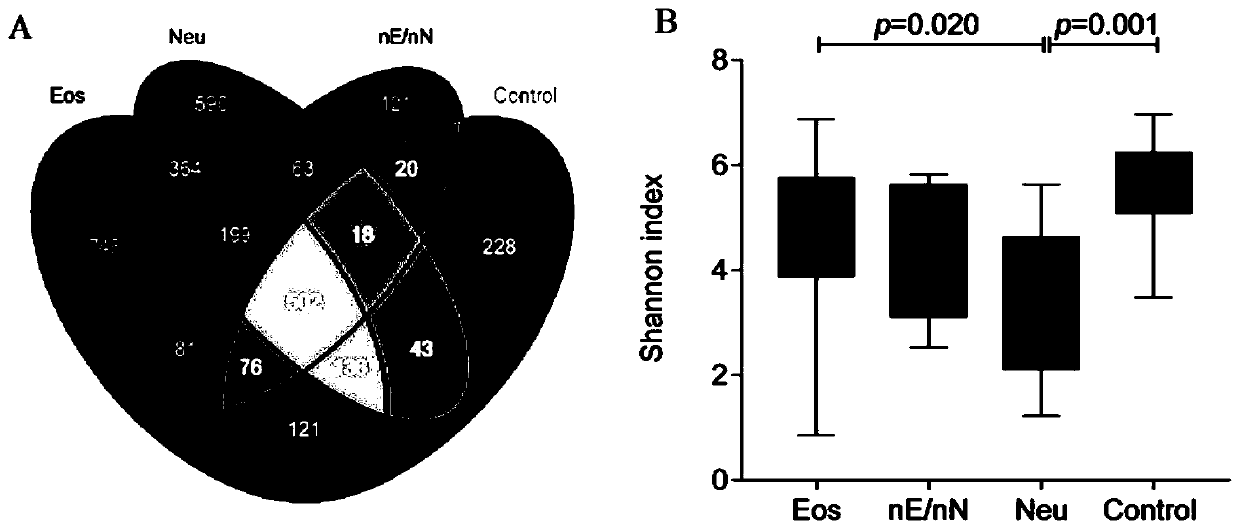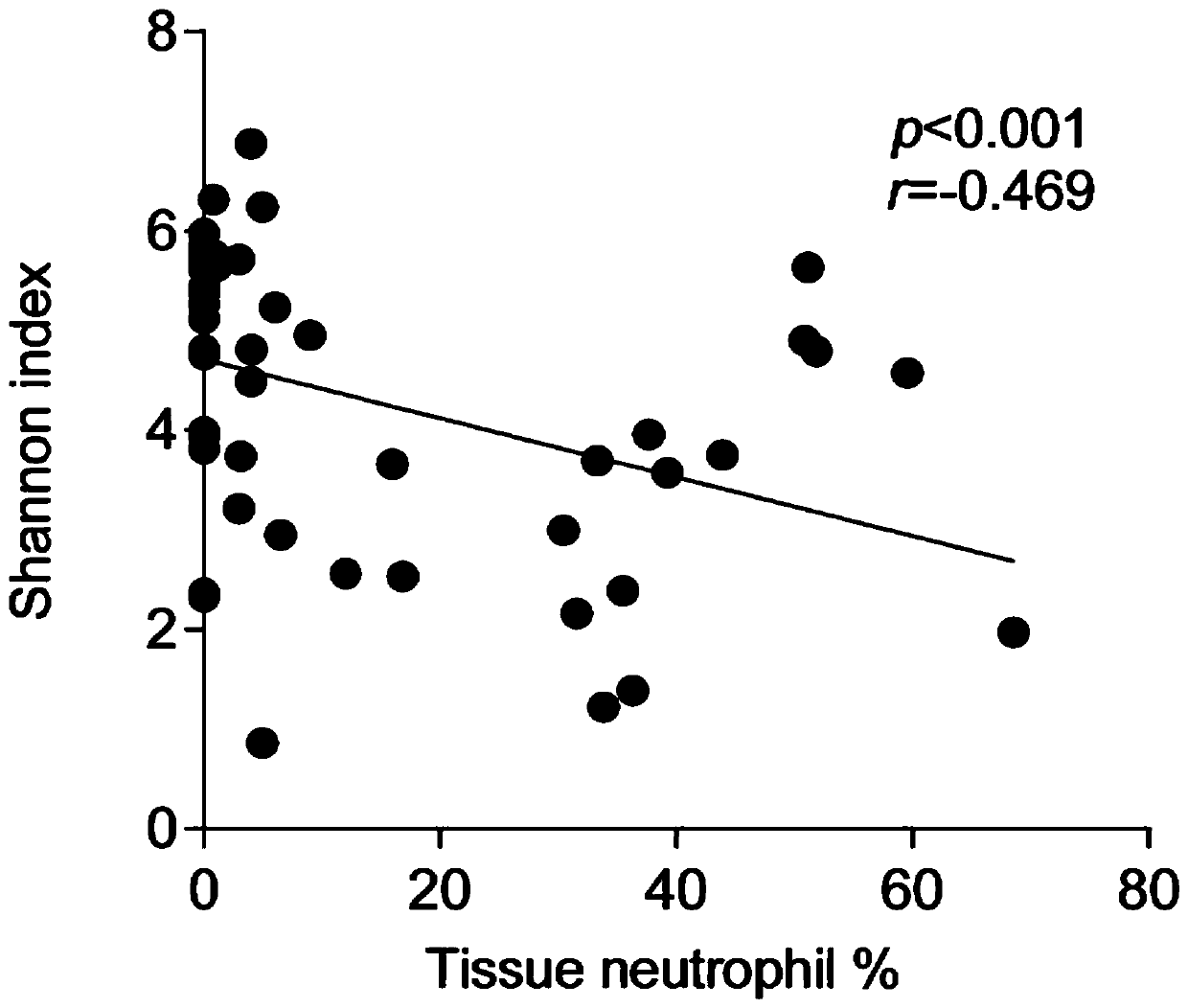Application of flora abundance testing sample to preparing nasal polyp and prognostic testing agent thereof
A technology for detecting substances and nasal polyps, which is applied in the fields of biochemical equipment and methods, microbial determination/examination, DNA/RNA fragments, etc. Whether the effect of recurrence
- Summary
- Abstract
- Description
- Claims
- Application Information
AI Technical Summary
Problems solved by technology
Method used
Image
Examples
Embodiment 1
[0067] 1. Research object
[0068] In this study, 22 controls and 66 CRSwNP patients (including 25 eosinophilic nasal polyps, 14 neutrophil nasal polyps, and 13 non-eosinophilic / non-neutrophil nasal polyps) were collected from Beijing Tongren Hospital. Nasal polyps, 14 mixed nasal polyps) with nasal cotton swabs (Copan, Brescia, Italy). The control group was derived from patients with anatomical variation undergoing septal deviation correction but without any other nasal disease.
[0069] Clinical data were collected for all subjects, including gender, age, comorbid diseases (asthma, allergic rhinitis, specificity), preoperative symptom scores (smell, nasal congestion, runny nose, head and face pain, sneezing, and preoperative total score). points), baseline histopathological cell count percentage (eosinophils, neutrophils, lymphocytes, plasma cells) and preoperative peripheral blood inflammatory cell percentages (eosinophils, neutrophils, lymphocytes) .
[0070] 2. Sample ...
Embodiment 2
[0087] The relationship between flora and polyp recurrence
[0088] Study on recurrence included all nasal polyp samples
[0089] 1. There was no significant difference in flora richness and uniformity between recurrent and non-recurrent nasal polyps, but there were significant differences in the entire flora structure ( Figure 14-16 ).
[0090] 2. There are differences in the abundance of flora at the phylum level and genus level between relapse and non-relapse ( Figure 17-18 ). The recurrence group had more phylum Proteobacteria, genus Prevotella, Fusobacterium, Clostridium sensustricto and Veillonella, less phylum Actinobacteria, genus Corynebacterium, Staphylococcus, Propionibacterium and Anaerococcus.
[0091] 3. The flora can predict the recurrence of nasal polyps
[0092] Integrating different clinical indicators and differential flora into Logistic regression analysis, we found that only tissue eosinophils % (the area under the curve (AUC) = 0.908) and phylum Act...
Embodiment 3
[0095] A method for screening bacterial flora to predict recurrence
[0096] Among the 66 patients with nasal polyps, except for one who was lost to follow-up, the remaining 65 patients had undergone standardized follow-up and medication, and had complete clinical data. Among them, there were 31 people in the recurrence group and 34 people in the non-relapse group.
[0097] 1. Single factor analysis
[0098] The 17 clinical indicators before operation and the relative abundance of the top 5 phylum levels and the top 30 genera level bacteria obtained by 16s rDNA sequencing were compared between the recurrence group and the non-relapse group, and a statistical P value less than 0.05 was regarded as statistically significant. difference.
[0099] The 17 clinical indicators are: age, gender, combined asthma, combined allergic rhinitis, combined atopy, preoperative symptom score (smell, nasal congestion, runny nose, head and face pain, sneezing and the total score of preoperative...
PUM
 Login to View More
Login to View More Abstract
Description
Claims
Application Information
 Login to View More
Login to View More - R&D
- Intellectual Property
- Life Sciences
- Materials
- Tech Scout
- Unparalleled Data Quality
- Higher Quality Content
- 60% Fewer Hallucinations
Browse by: Latest US Patents, China's latest patents, Technical Efficacy Thesaurus, Application Domain, Technology Topic, Popular Technical Reports.
© 2025 PatSnap. All rights reserved.Legal|Privacy policy|Modern Slavery Act Transparency Statement|Sitemap|About US| Contact US: help@patsnap.com



